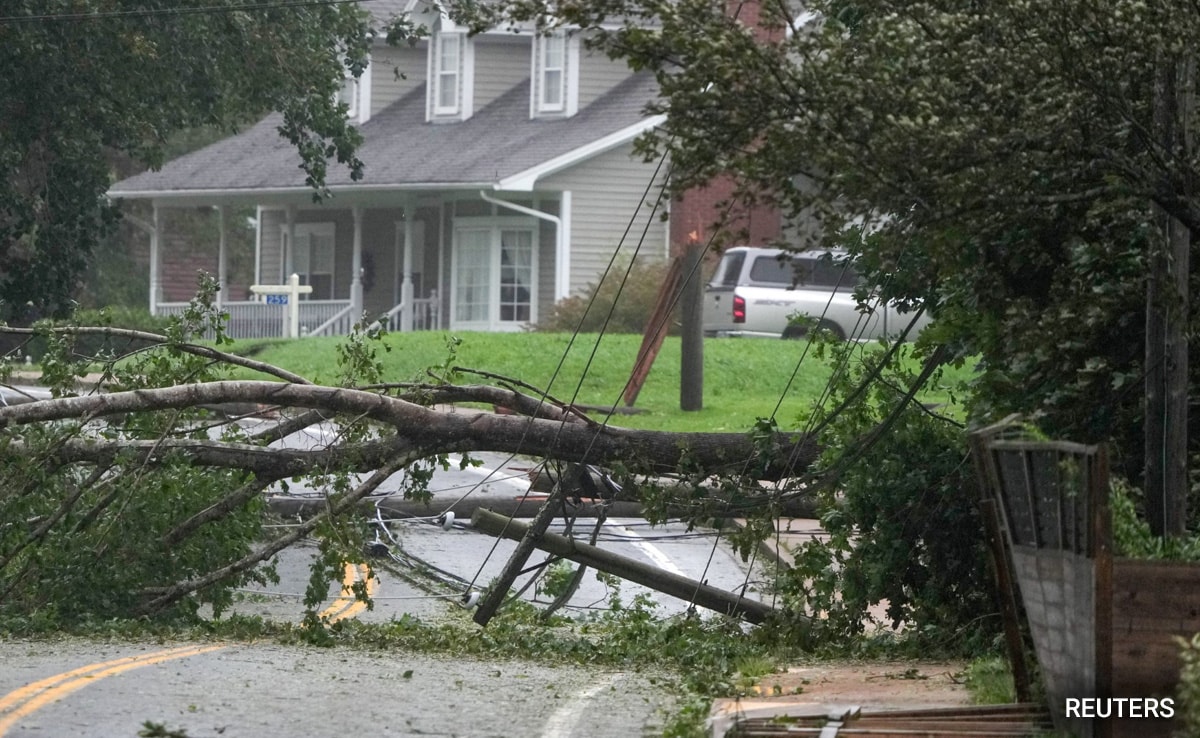
Liverpool, Nova Scotia:
The Lee storm system made landfall in a far western part of Canada’s Nova Scotia province on Saturday, packing hurricane-force winds that knocked out power lines and downed trees.
The U.S. National Hurricane Center (NHC) said in its latest update that Lee made landfall on Long Island, a small island southwest of Halifax, with estimated maximum sustained winds of 70 mph (110 km/h).
Strong winds, coastal flooding and heavy rains were occurring in parts of New England and Atlantic Canada, the NHC said earlier on Saturday.
In the Canadian province of Nova Scotia, around 144,000 people were without power on Saturday after winds downed trees. In neighboring New Brunswick, 37,000 people had no electricity.
“Crews have been able to restore power to some customers … however, conditions are getting worse. In many cases, especially when winds are above 80 km/h, it isn’t safe for our crews,” said Matt Drover of the Nova Scotia electric utility.
Winds have reached over 100 km/h in parts of the west and over 90 km/h in downtown Halifax, the largest city in the province, he said in a statement. Halifax airport was closed to all flights.
Authorities in Halifax, one of Canada’s biggest ports, urged people to stay at home and not go sightseeing.
“We’ve seen images of people near the waterfront, and it’s unnecessary, and it’s dangerous,” Halifax mayor Mike Savage told a briefing. “The worst of the storm hasn’t hit us yet.”
In a social media post, Nova Scotia police said they had received reports of drivers heading to the coast to watch the waves, which they said was dangerous.
Earlier, the Canadian Hurricane Center projected Lee would make landfall in Nova Scotia some time after 3 p.m. ADT (1800 GMT) or later in New Brunswick with winds below hurricane force.
Kyle Leavitt, in charge of emergency services in New Brunswick, said in a statement that “Lee has arrived faster and with slightly greater intensity than expected”.
The potential path could take the storm into the Bay of Fundy, which separates the two provinces and has one of the highest tides in the world, with the difference between high and low tide as much as 12 meters (39 feet), or 16 meters at the head of the bay.
Lee is also expected to generate rainfall of 2-5 inches (5 cm to 12.5 cm).
In anticipation, the administration of U.S. President Joe Biden issued an emergency declaration for Maine and Massachusetts, providing federal assistance for the states.
Lee has been churning as a large hurricane over the Atlantic for more than a week, briefly threatening Bermuda but mostly harmless for anyone on land. It marks the second year in a row that such a powerful storm has reached Canada after Hurricane Fiona ripped into eastern Canada a year ago.
(Except for the headline, this story has not been edited by NDTV staff and is published from a syndicated feed.)




